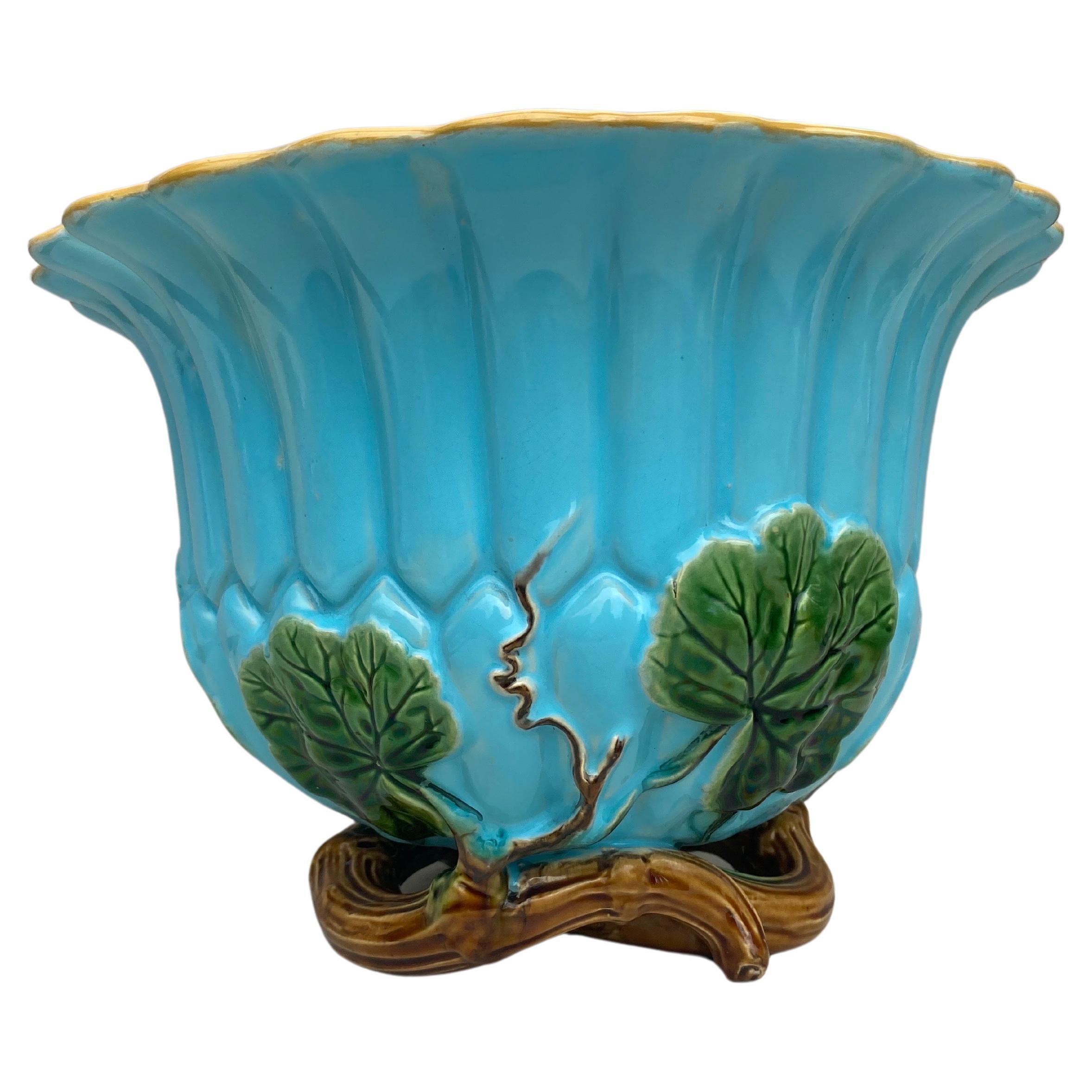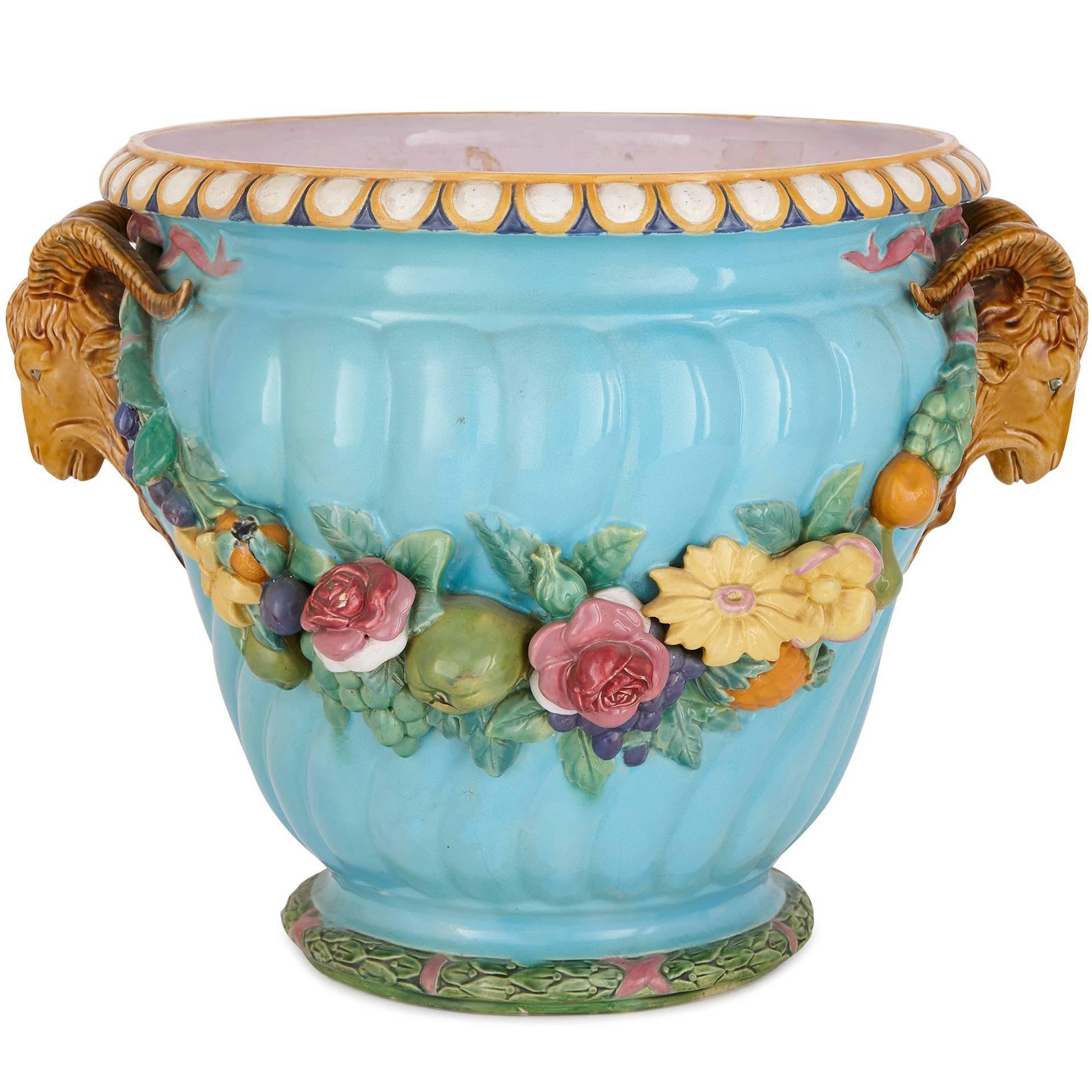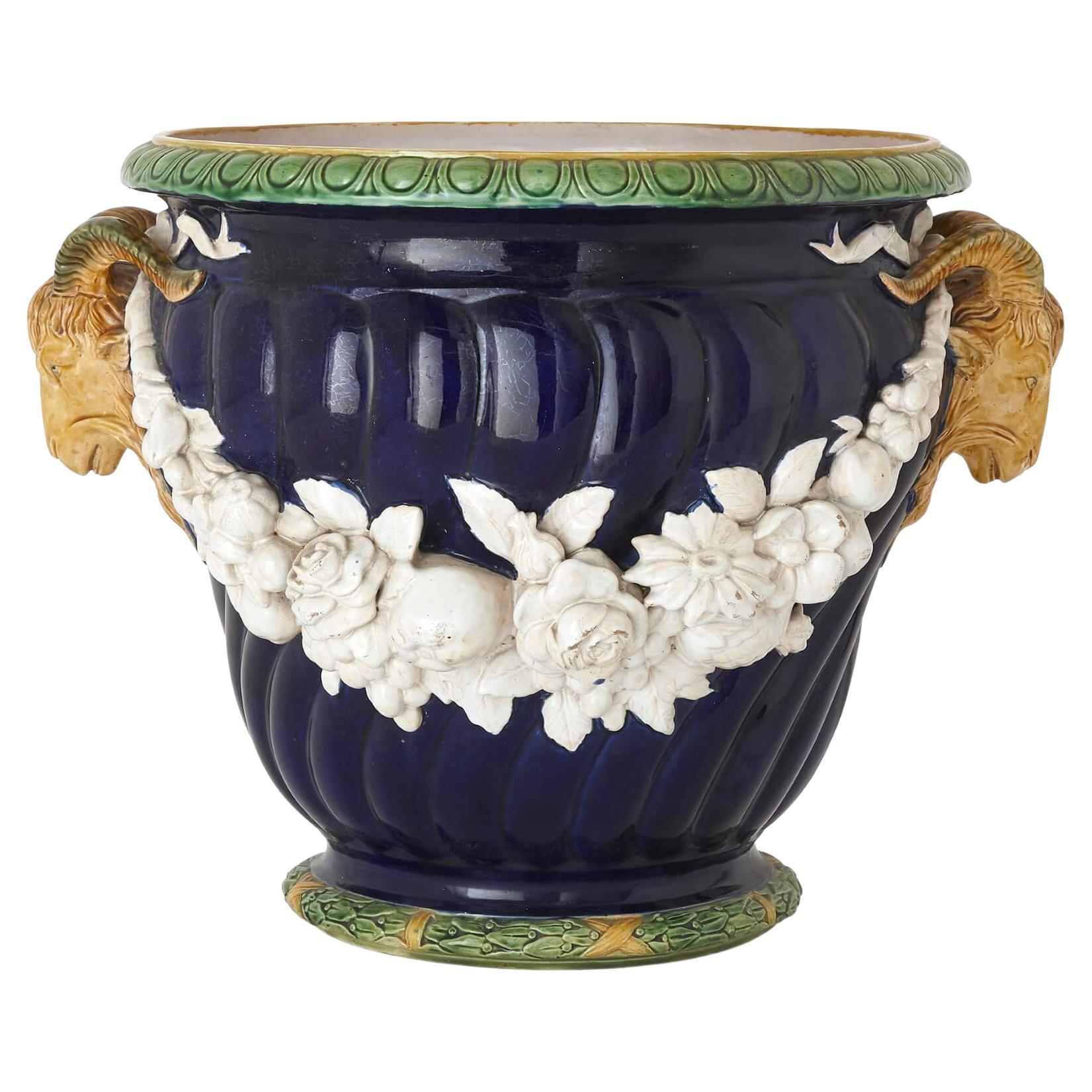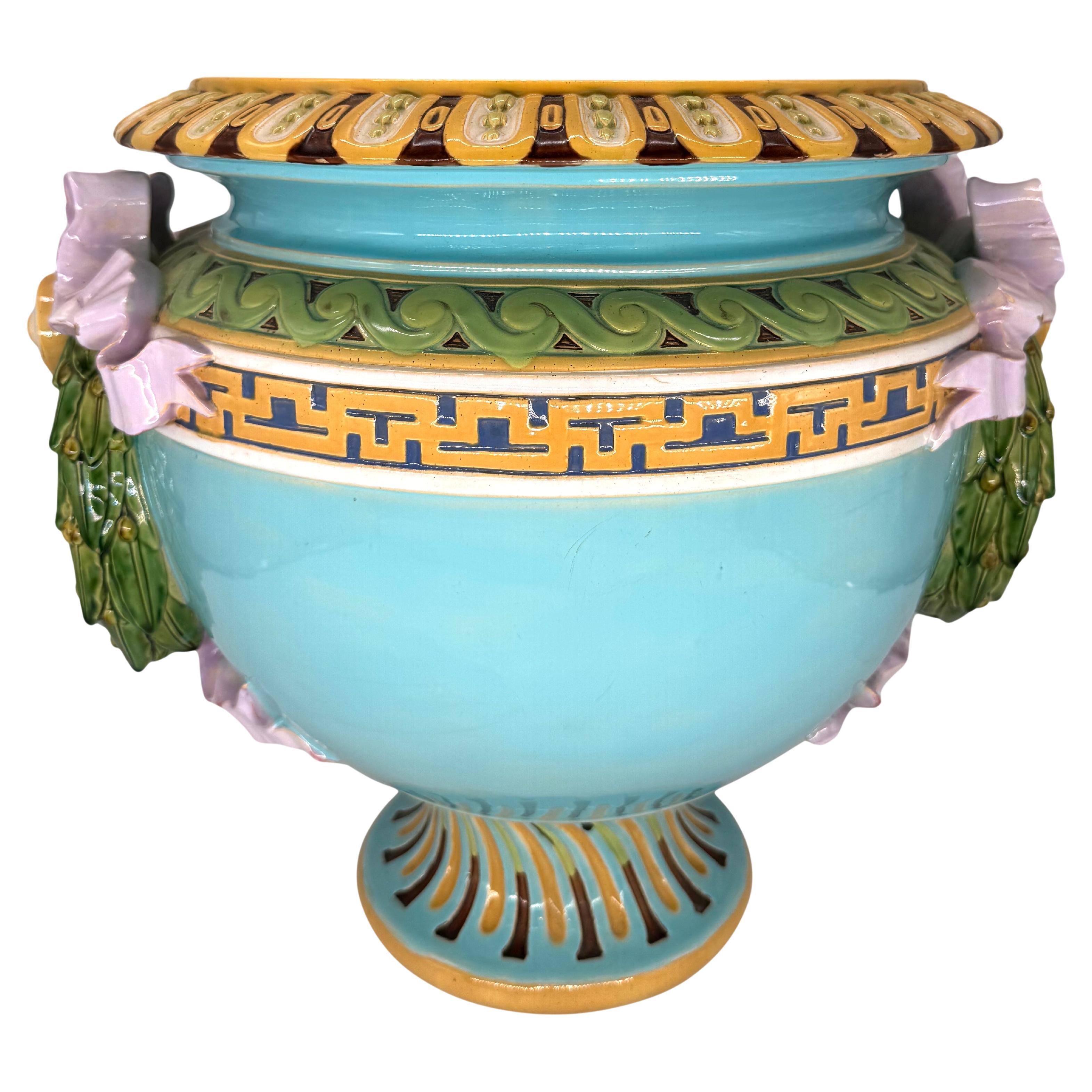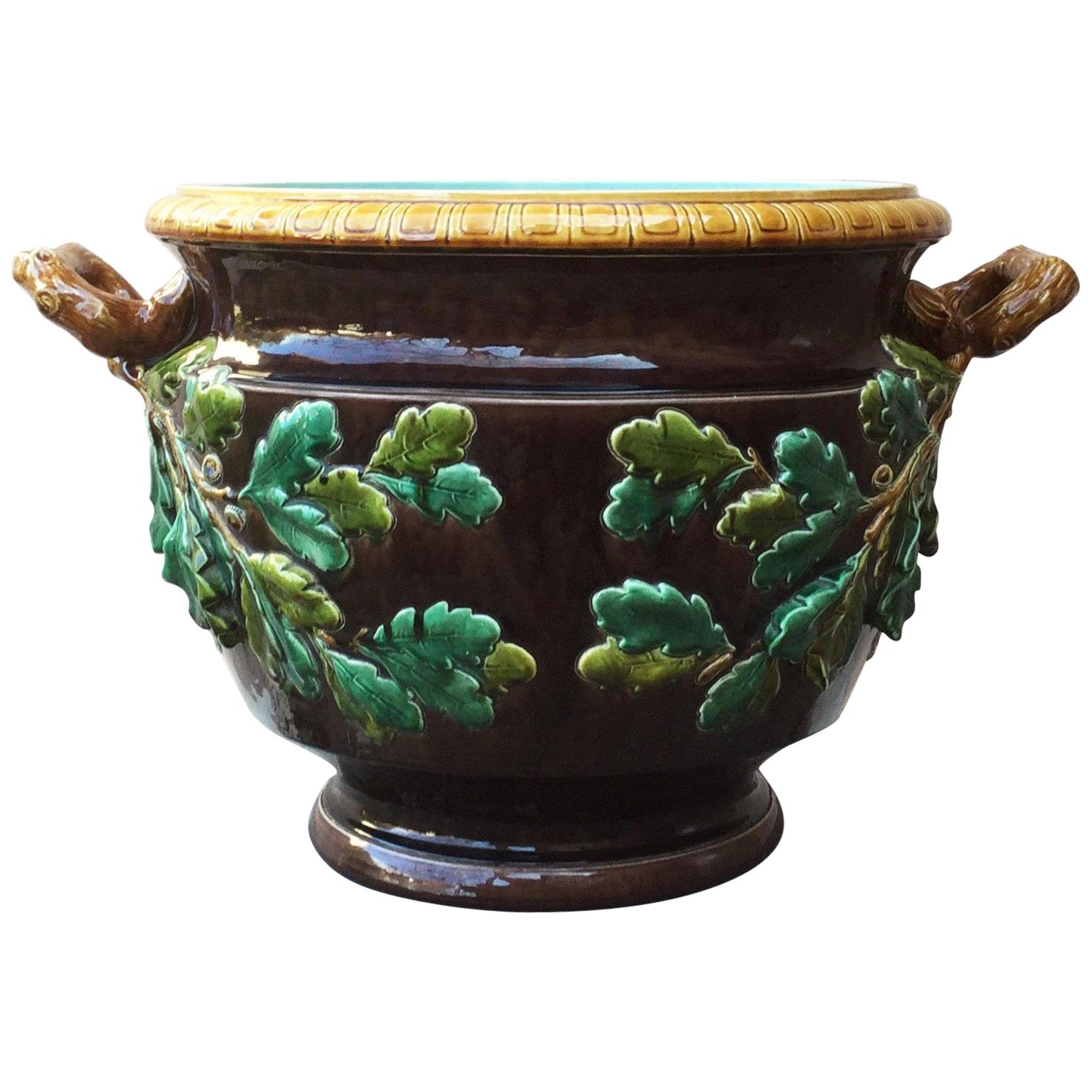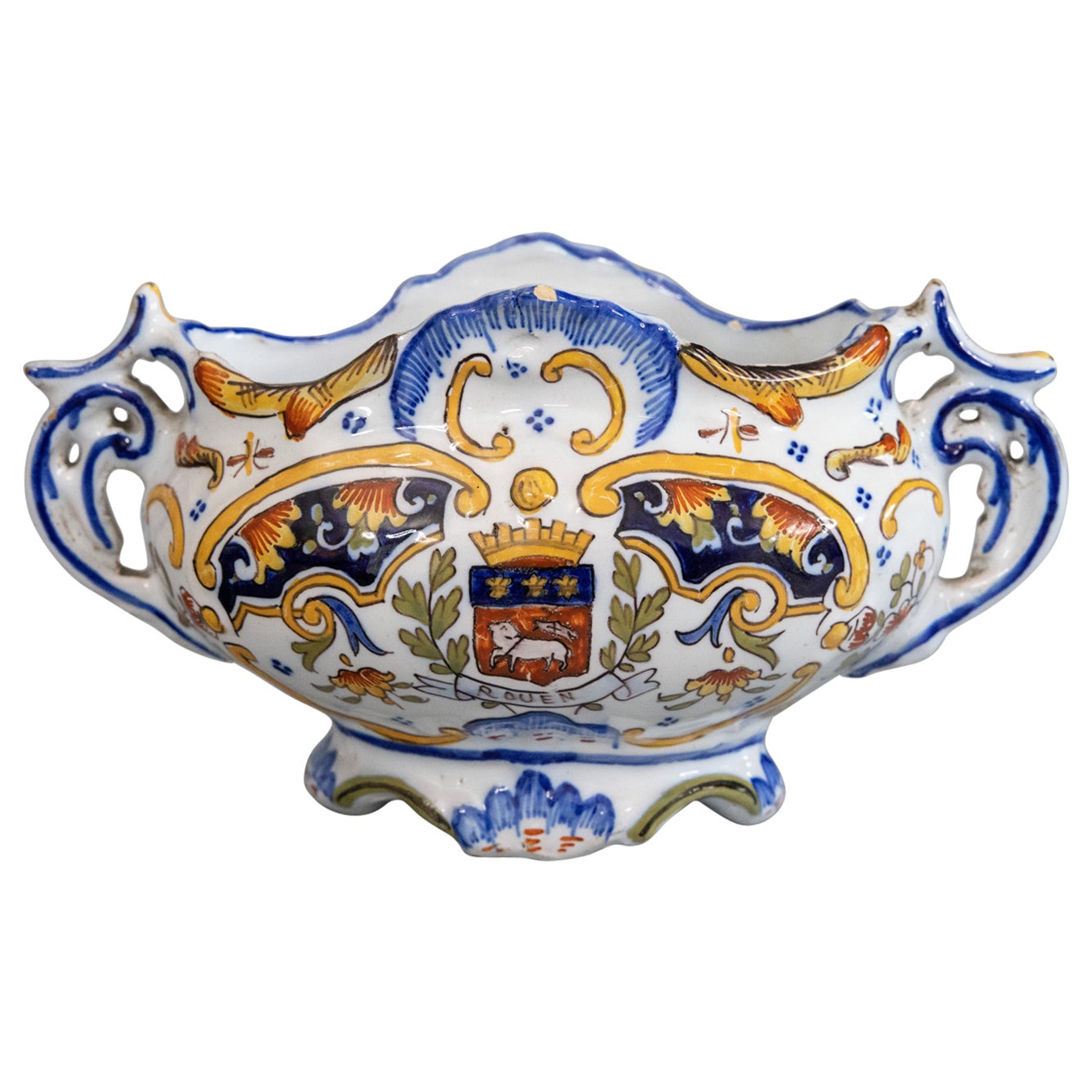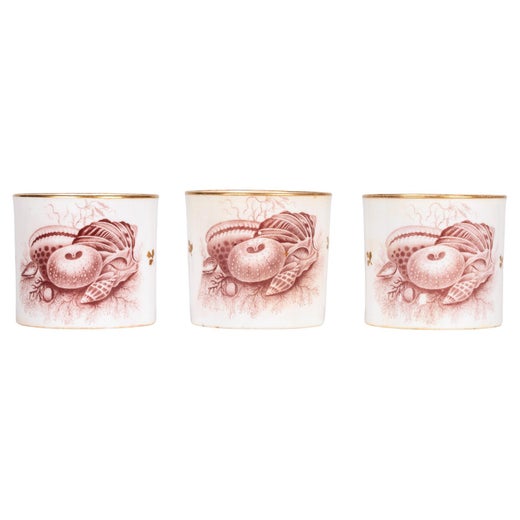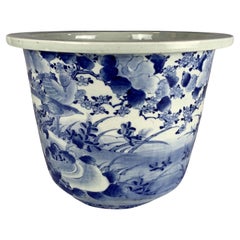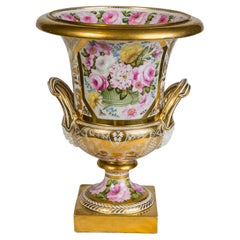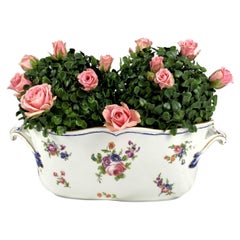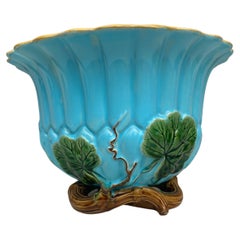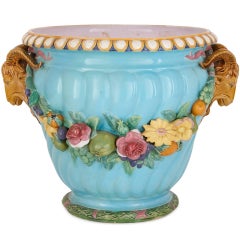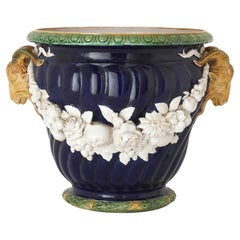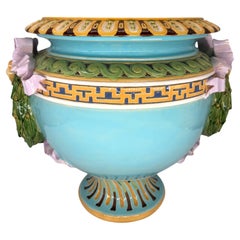Large Antique Majolica Planter Made Circa 1880 Turquoise Ground & Green Leaves
About the Item
- Creator:Minton (Manufacturer)
- Dimensions:Height: 13 in (33.02 cm)Diameter: 15 in (38.1 cm)
- Style:Arts and Crafts (Of the Period)
- Materials and Techniques:
- Place of Origin:
- Period:
- Date of Manufacture:circa 1880
- Condition:
- Seller Location:Katonah, NY
- Reference Number:1stDibs: LU866532541462
Minton
Pottery is one of the oldest decorative art forms, and Minton is one of its historical masters. For more than 250 years, the English company was a premier producer of porcelain and ceramic wares. Its factory was known for detailed and brightly colored Victorian tableware, including dinner plates and serving pieces.
Thomas Minton founded the Minton factory in 1793 in Stoke-upon-Trent, England. It initially made earthenware but introduced bone china in 1798. When Minton died in 1836, the company passed to his son, Herbert Minton. The younger Minton was a savvy businessman with an eye for design. He introduced glossy majolica earthenware to the factory’s repertoire and hired skilled artists and designers like Augustus Welby Northmore Pugin and Albert-Ernest Carrier-Belleuse, boosting the company’s reputation.
In 1851, Minton debuted its majolica at the Great Exhibition in London. It became a royal family favorite and was even used to tile the Royal Dairy at Windsor Home Park. Minton majolica was also displayed on the monumental Saint George and the dragon fountain at the 1862 London International Exhibition.
Colin Minton Campbell, a nephew of Herbert Minton, took over the family business in 1858. He led the company to the head of the 1870s English art pottery movement. In the 1890s, French porcelain artist Marc-Louis Solon helped modernize Minton with his Art Nouveau designs.
Minton ceased operating as an independent company when it merged with Royal Doulton Tableware Ltd. in 1968. It was the end of an era, but not the end of widespread appreciation for Minton ceramics.
In 1982, the ”English Majolica” exhibition at the Cooper Hewitt, Smithsonian Design Museum featured 75 Minton pieces. When the Metropolitan Museum of Art reopened its British Galleries in 2020, it included a display of three colorful Minton majolica bird sculptures. Minton pottery was also on display from September 2021 to January 2022, along with other English pottery, at the Bard Graduate Center’s ”Majolica Mania” exhibition.
On 1stDibs, find exquisite Minton serveware, decorative objects, wall decorations and more.
- ShippingRetrieving quote...Shipping from: Katonah, NY
- Return Policy
More From This Seller
View AllEarly 20th Century Japanese Chinoiserie Planters and Jardinieres
Porcelain
Antique Early 19th Century British Regency Urns
Porcelain
Antique Late 18th Century English Neoclassical Vases
Creamware
Antique Late 18th Century French Porcelain
Porcelain
Antique 1830s English Folk Art Decorative Bowls
Creamware
Antique Early 19th Century Neoclassical Centerpieces
Pearlware
You May Also Like
Antique 1880s English Victorian Planters, Cachepots and Jardinières
Ceramic
Antique 19th Century English Victorian Planters, Cachepots and Jardinières
Majolica
Antique 19th Century English Victorian Planters and Jardinieres
Majolica
Antique 19th Century English Victorian Ceramics
Majolica
Antique 1880s French Victorian Planters and Jardinieres
Ceramic, Faience
Antique Early 1900s French Planters, Cachepots and Jardinières
Faience
